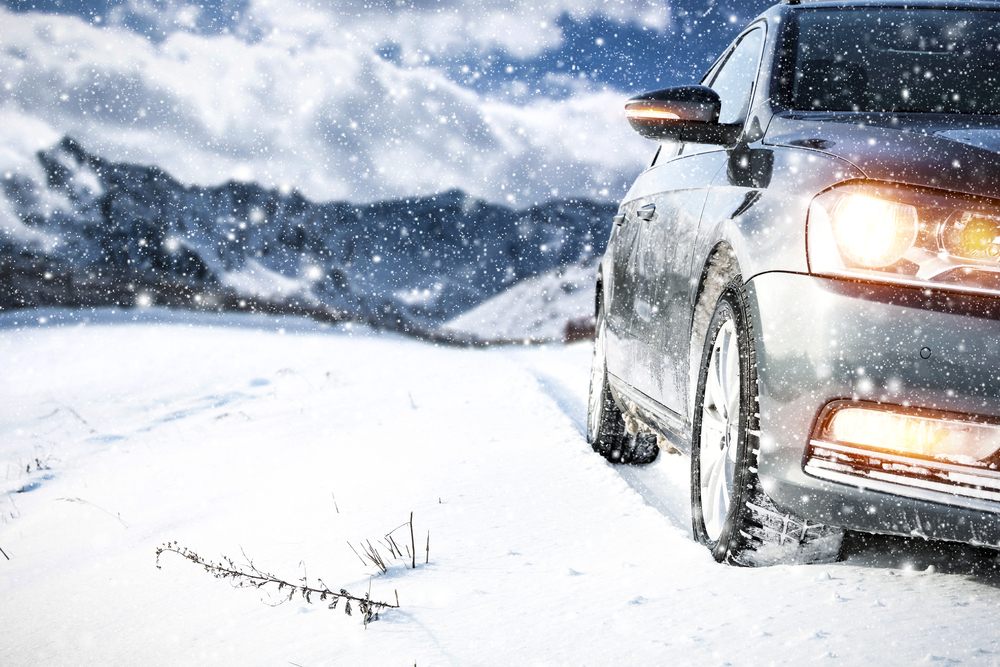If you remember the Wisconsin winter driving tips, it is possible to get through the winter months without problems. However, if you are hurt in a car accident, the Wisconsin car accident lawyers at Martin Law Office, S.C., can assist you.
One of the most hazardous parts of winter driving is relying on worn tires. Bald tires on Wisconsin’s frozen roads increase stopping distances and make it easier to lose control in an emergency. A loss of control on a slick road in Wisconsin can put you into a ditch or cause an accident with another vehicle.
Most states use a 2/32” minimum tread depth as the standard. However, many tests show that you lose a lot of tire traction when the tread is below 4/32”. Sure, you can get through the winter on old tires, but it is better to replace them. Also, remember that your car can suffer thousands of dollars in damage from simply sliding into a curb at five miles per hour.
Regular wiper blades do not do well in harsh Milwaukee winters. The blades might streak the windshield or leave chunks of ice and snow, increasing the chances of a car accident. Putting on winter wiper blades reduces the chances of an accident.
The entire wiper blade is covered in a rubber boot that stops snow and ice from staying on the blade. As a result, you will notice much better visibility in winter weather to stay safe on the road. The regular wiper blades can be reused, so save them and put them away for the spring.
Many drivers have tires with low pressure. This can be a serious problem in the winter because underinflated tires reduce stability and traction. So, take your car to the gas station and use the compressor to fill them or take the vehicle to your mechanic.
Imagine going to the Milwaukee Art Museum or The Harley-Davidson Museum in the middle of the winter. Then, you return to your car to drive home, and your door locks are frozen!
If you do not keep the door locks lubricated in the winter, they are more likely to corrode. Further, it can be impossible to use your car key to open the door. Yes, many Wisconsin drivers have key fobs these days. But if the fob battery dies, the key will not turn the frozen lock.
You can prevent this problem by lubricating the door and truck locks every fall. Spray graphic lock lubricant in the locks. Some drivers prefer dry Teflon lube. Shake the can well and spray it to distribute the liquid into the locks.
If you break down on I-94 or I-43 in Milwaukee in the winter, you could be stuck in the cold for quite some time. That is why your emergency kit will come in handy to keep you safe and sound.
Some good choices for a winter emergency kit are warm clothes, road flares, water, food, a flashlight, a radio, and a cell phone charger. Also, consider having one or two bags of sand or road salt in the trunk for added traction if you get stuck in the snow.
Maintaining your vehicle according to the manufacturer’s manual is always essential. It is even more critical when the weather turns cold.
First, consider changing to synthetic engine oil for the winter at the next oil change. Synthetic oil is more expensive but provides better protection and lubrication during colder months. It also flows easier when it is cold.
For example, if it is 5 degrees in Milwaukee, synthetic oil will prevent metal grinding metal when you start the engine in the morning. Faster starting is also easier on the car battery and reduces the chances of being stuck on the road.
Next, be sure the washer fluid reservoir is full. It is simple to fill the tank on your own. Most automotive experts recommend a window washer fluid for up to -40 F. If you put water in the reservoir in the summer, you should drain it before adding fluid.
If you are familiar with auto maintenance, it also is wise to check the engine coolant level and brake fluid. If you are uncomfortable checking these items, you can ask the oil change professionals to do it for you.
In the Wisconsin winter, there are fewer hours of sunlight. Wisconsin can see more than 15 hours of daylight in the summer, but this drops to less than eight in the winter. So, driving more in darkness means having properly functioning headlights is even more critical.
Before the snow flies, have a family member or friend help check your headlights, turn signals, and brake lights. If a bulb or headlight is out, have it changed before winter starts.
Next, consider upgrading to LED and HID lights on an older vehicle, so you have increased visibility. Talk to your car maintenance professional about upgraded headlights that are appropriate for your vehicle.
The car accident prevention tips above should keep you out of trouble most of the time, but sometimes, bad things still happen. After a Wisconsin winter car accident, you may need help figuring out what to do or where to turn. You could have serious injuries that take weeks or months of recovery. Working might be impossible and enjoying things you once loved may be difficult.
If someone’s negligence caused your winter car accident, legal options exist. The Wisconsin car accident lawyers at Martin Law Office, S.C., can get you the compensation you need to recover.
Their attorneys are proud to serve car accident clients in Oak Creek, Milwaukee, New Berlin, Mount Pleasant, South Milwaukee, Racine, Franklin, West Allis, and Wauwatosa. Contact us today for a complimentary consultation about your Wisconsin car accident case.
